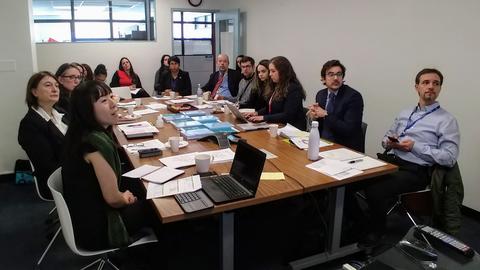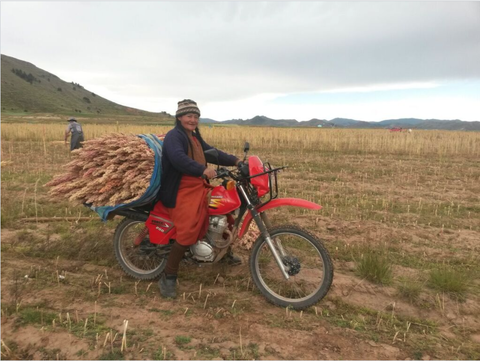October 15, 2018
Fish farming improves the family diet in rural Bolivia
Chronic child malnutrition continues to be one of the main challenges not yet solved in Bolivia. One in three children under five suffers from chronic malnutrition; and six out of ten suffer from anemia. Malnutrition is caused by a variety of factors derived from living in poverty. Habits of diet, childcare, education, access to health, and water and sanitation require integrated responses. The Government, with the support of a SDG Fund joint programme, is developing various strategies to reverse this situation and fish farming is making a difference.
In order to diversify the diet and generate additional income for the family economy, the program "Improvement of the nutritional situation of children from the strengthening of local sustainable food systems" introduced in 2015 fish production in the rural municipalities of Pojo and Pocona (Cochabamba). Since then, up to 224 families have incorporated carp fish (Ciprinus carpa) into rustic ponds to their productive systems, with the aim of improving and diversifying the family diet.
The production is destined mainly to families. In the first phase, 24,640 fingerlings were delivered in a first phase. In a second stage, families with their own resources acquired 10,000 more fingerlings. To give sustainability to the initiative, families have been contacted with fish distributors and a pilot center for the production of carp in the municipality is being implemented.

People at first did not think it would work now they are happy and want to expand their ponds, "explains Carlos Capayo, producer of the Incallajta Community, in the municipality of Pocona. "Well it has turned out, the" guaguas "(children) usually do not want to eat vegetables with potatoes and rice, but now with the fish they eat fast. They really like it. As we do not always have enough to buy meat, now we can take fish and give our children meat, so they will not be skinny anymore and at school they will also yield more. When the neighbors want we also sell them and there is always a little more money. "
As a result of the SDG Fund program, the Ministry of Rural Development and Lands began to promote fish production in the country for its contribution to the achievement of food sovereignty through the Deconcentrated Public Institution of Fisheries and Aquaculture. This initiative is implemented jointly by the Food and Agriculture Organization of the United Nations (FAO) as the lead agency, the United Nations Children's Fund (UNICEF), the United Nations Industrial Development Organization (UNIDO), with funding from the Sustainable Development Goals Fund (SDGF).
People at first did not think it would work, but now they are happy and want to expand their ponds
Carlos Capayo
Local producer in Incallajta (Pocona)
The program emphasizes improving the nutrition of families, one of the deficiencies identified in the family diet are proteins of animal origin, fish farming has become a source of access to this type of food that not only provides protein but important minerals such as phosphorus. The producers are in a process of learning and sharing knowledge to improve the culture of fish in their communities
The incorporation of fish in the family diet allows improving nutrition contributing to the achievement of Objective 2, Zero Hunger in its goal 2 that establishes until 2030, ending all forms of malnutrition, including achieving, by 2025, the goals internationally agreed on the stunting and wasting of children under five years of age, and addressing the nutrition needs of adolescent girls, pregnant and lactating women and the elderly. Since this type of food provides proteins, vitamins and minerals for better health.







